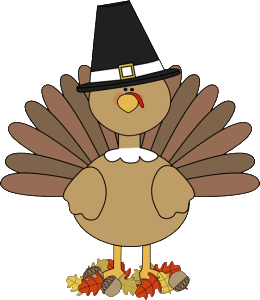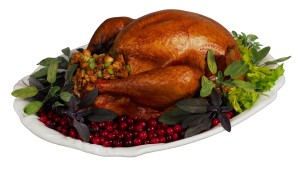Hey, Fruitcakers!
Like building snowmen, sipping hot chocolate, and warming up by the fireplace, mailing fruitcakes has become a pretty standard tradition in the winter season. It’s very common for families to receive this specific kind of cake throughout the winter holidays. In fact, there’s a day for it! Yesterday was National Fruitcake Day.  I can safely say for myself that I have never tried fruitcake, nor do I have a burning desire to EVER try it. Come to think of it, I don’t know anybody who actually LIKES fruitcake! Legendary late night host Johnny Carson is noted for his ridicule of this dessert, saying, “The worst gift is fruitcake. There is only one fruitcake in the entire world and people keep sending it to each other.”
I can safely say for myself that I have never tried fruitcake, nor do I have a burning desire to EVER try it. Come to think of it, I don’t know anybody who actually LIKES fruitcake! Legendary late night host Johnny Carson is noted for his ridicule of this dessert, saying, “The worst gift is fruitcake. There is only one fruitcake in the entire world and people keep sending it to each other.”
Still, that hasn’t stopped anyone from sending fruitcakes to one another. But if fruitcake isn’t a desired, delectable dessert that’s loved by all, then how did it get to be so customary to send this cake in the mail this time of year?
Well, let’s have a quick history lesson about the matter. First of all, fruitcakes have been around since the days of ancient Rome. They put pomegranate seeds, pine nuts, and raisins in their fruitcakes—which doesn’t sound too bad. Surprisingly, a lot of the old recipes for fruitcakes likely trump any fruitcake made today. Indeed, fruitcake USED TO BE…dare I say…TASTY!
Back in the 1200’s, travelers loved having a compact, energizing cake that didn’t risk easily spoiling. And about 500 years after that, fruitcakes really hit their stride. So, you see, the question isn’t so much ‘how did such a disliked dessert get to be so popular?’, but more so, ‘how did such a beloved dessert get to be so mocked?’.
Over time, as the fruitcake evolved, baking and assembling fruitcakes became rather involved. And because they became A LOT of work, they were only offered for special occasions like weddings and birthdays. At this point, all fruitcakes were locally made. But this changed when it became popular to mail-order products in 1913.
Once fruitcakes started traveling across the country, they began to lose their appeal.  Maybe it was because people didn’t know exactly where the cake came from. Maybe fruitcakes aren’t made with the same care and expertise as they once were. Maybe it’s because of Johnny Carson.
Maybe it was because people didn’t know exactly where the cake came from. Maybe fruitcakes aren’t made with the same care and expertise as they once were. Maybe it’s because of Johnny Carson.
In any case, fruitcakes—despite their bad rep—don’t seem to be going anywhere. Go ahead and try one this year. You might like it! And, as always, thanks for reading!
- John



 The Fiesta of Our Lady of Guadalupe is a Mexican holiday dating back to the morning of December 9, 1531, when a ghostly girl on top of the Tepeyac Hill instructed one Juan Diego to build a church there in her honor. As a miraculous sign to prove her identity as the Virgin Mary, the apparition had Juan Diego pick Castillian Roses (a foreign flower to Mexico that inexplicably bloomed on the hilltop in mid-December). The lady rolled the flowers in a fabric. On December 12, when Juan Diego, showed the roses to the Bishop, the image of the Lady of Guadalupe was there on the fabric!
The Fiesta of Our Lady of Guadalupe is a Mexican holiday dating back to the morning of December 9, 1531, when a ghostly girl on top of the Tepeyac Hill instructed one Juan Diego to build a church there in her honor. As a miraculous sign to prove her identity as the Virgin Mary, the apparition had Juan Diego pick Castillian Roses (a foreign flower to Mexico that inexplicably bloomed on the hilltop in mid-December). The lady rolled the flowers in a fabric. On December 12, when Juan Diego, showed the roses to the Bishop, the image of the Lady of Guadalupe was there on the fabric! t important day of the year for the Japanese which makes Ōmisoka the second-most important. They observe it by eating a bowl of long noodles called Toshikoshi, which translates to “crossing over from one year to the next.” The Japanese will also traditionally make a midnight visit to local temples or shrines to be there when the new year arrives.
t important day of the year for the Japanese which makes Ōmisoka the second-most important. They observe it by eating a bowl of long noodles called Toshikoshi, which translates to “crossing over from one year to the next.” The Japanese will also traditionally make a midnight visit to local temples or shrines to be there when the new year arrives.




 Hanukkiah. A menorah, on the other hand, has only seven candleholders—like the lamp that was used in the ancient holy temple in Jerusalem.
Hanukkiah. A menorah, on the other hand, has only seven candleholders—like the lamp that was used in the ancient holy temple in Jerusalem.
 use it fits the occasion so well. Other meats were considered for the dinner too, but didn’t make the cut for one reason or another. Unlike cows or chickens, turkeys don’t provide milk or lay eggs. Also, turkey wasn’t so common a meat as say pork or other fowl and, thus, it seemed like the right choice to celebrate a special occasion.
use it fits the occasion so well. Other meats were considered for the dinner too, but didn’t make the cut for one reason or another. Unlike cows or chickens, turkeys don’t provide milk or lay eggs. Also, turkey wasn’t so common a meat as say pork or other fowl and, thus, it seemed like the right choice to celebrate a special occasion.

